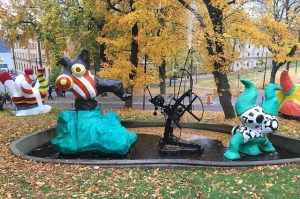10 Evolutionary Miracles That Happened More Than Once
Evolution is a trip—literally and figuratively.
The fact that life can adapt, tweak, and reinvent itself to survive is already wild. But what’s even more mind-blowing is this: sometimes evolution hits copy and paste on traits across totally unrelated species.
Sure, it makes sense that camouflage, flight, or venom might evolve in different animals—those are useful tools in nature’s survival kit. But sometimes, evolution goes full déjà vu. Entirely different species, with no shared lineage or neighborhood, end up developing nearly identical features, like nature ran the same program twice on opposite sides of the planet.
This phenomenon is called convergent evolution, and it’s one of the most fascinating quirks of biology—proof that even in nature, great ideas catch on.
10. Nature Loves Making Crabs

It cannot be overstated: nature is obsessed with crabs.
Humans are too, though usually in a butter-drenched, garlic-scented kind of way. Nature’s love, on the other hand, runs deep and evolutionary.
In fact, crabs are such a popular shape in the grand design of life that evolution has independently “invented” them multiple times. This weird and wonderful phenomenon is called carcinization—and yes, it happens so often it earned its own fancy name.
Depending on who you ask, crab-like creatures have evolved five or six separate times across history. There are true crabs (the menu regulars), but then there are false crabs, like hermit crabs, which evolved from more lobster-like ancestors. Then you’ve got dromiids (aka sponge crabs), porcelain crabs, hairy stone crabs, and of course, the heavy hitters like king crabs, who look like lobsters that took a crash course in being buff.
So why does nature keep hitting the crab button?
No one’s 100% sure, but the best guess is: it just works. The squat, armored, side-walking design of a crab is incredibly efficient for survival—better, in many cases, than the elongated bodies and tails their ancestors used to rock.
9. Caffeine Production: A Remarkable Evolution in Plants

Caffeine is the world’s most popular psychoactive substance, and for good reason. It’s the energizing compound that powers our mornings, keeps us alert, and even finds its way into snacks and drinks. While most of us associate caffeine with coffee and tea, these are far from the only natural sources of this fascinating chemical.
In fact, caffeine evolved independently in multiple plants that are not biologically related. Beyond coffee and tea, you can find caffeine in cacao (the source of chocolate), yerba mate, and around 60 other plants worldwide. This widespread presence suggests that caffeine serves an important purpose for these plants—often as a natural defense mechanism against pests and herbivores. The bitter taste of caffeine deters insects and animals from eating the plants, giving them a survival edge.
Interestingly, while the chemical process of producing caffeine is similar across these plants, the genetic origins of caffeine production are not. Research has revealed that the enzymes responsible for making caffeine in coffee and chocolate, for example, are not related. This means that these plants developed their ability to produce caffeine through entirely separate evolutionary paths.
The story gets even more fascinating when we look at tea. After scientists unlocked the genome of coffee, they discovered that tea and coffee actually evolved their caffeine-producing abilities through completely different genes. While the enzymes involved differ, this genetic distinction highlights an entirely unrelated evolutionary process between the two plants.
What’s remarkable is that, despite their differences, these plants independently “discovered” caffeine as a useful tool for survival. It’s a perfect example of convergent evolution, where unrelated species develop similar traits for similar purposes, but through entirely different mechanisms.
Caffeine’s presence in so many plants is a testament to nature’s ingenuity. From the beans of coffee plants to the leaves of tea bushes and the seeds of cacao trees, caffeine has become a defining feature of human culture—and a reminder of how deeply connected we are to the natural world.
8. Six-Legged Bodies Evolved Twice
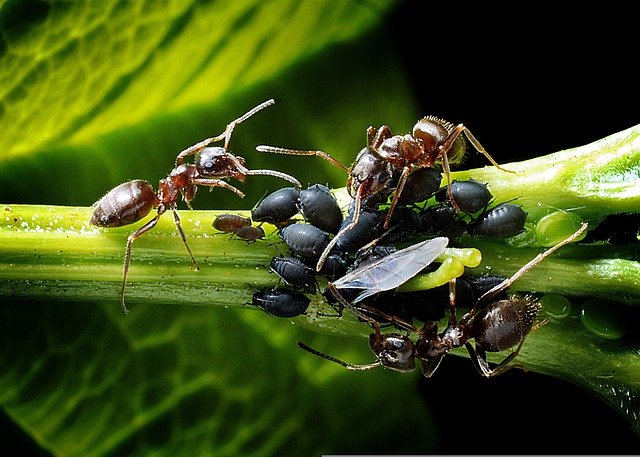
For most people, anything with six legs is basically an uninvited guest. Whether it’s crawling across your picnic or dive-bombing your ceiling light, it’s rarely a welcome sight. Even the more beloved bugs—like honeybees—are still best appreciated from a safe distance.
But nature? Nature is totally into them. So much so that the six-legged body plan may have evolved twice.
For years, scientists assumed insects came from many-legged ancestors, like centipedes or millipedes, and that losing legs over time was part of the deal. But recent evidence suggests something weirder: the six-leg format might have emerged independently in two separate evolutionary paths.
Here’s the twist: insects and crustaceans both came from a shared ancestor. At some point, this ancestor branched off into hexapods (aka the six-legged crowd). But a deep dive into mitochondrial DNA revealed a surprise guest: collembola, or springtails. These weird little creatures aren’t technically insects but still have six legs—and they may have split off from crustaceans before insects even existed.
7. Teeth Evolved in Different Times and Species
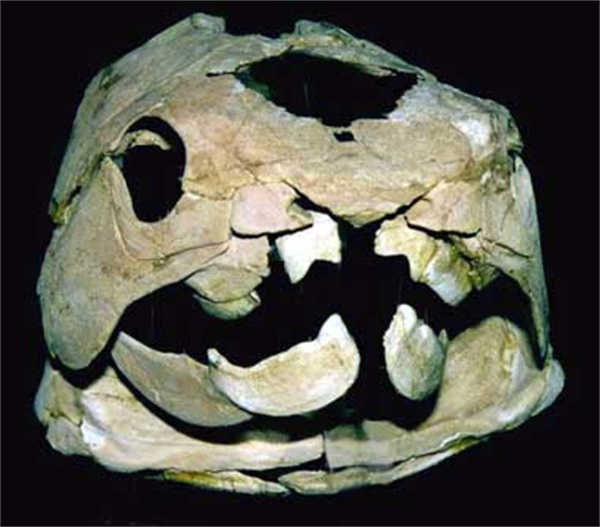
Most of us don’t spend much time thinking about teeth—until we chip one, lose one, or forget to brush them for a few days too many. Evolution, on the other hand, had a lot to say about them.
Turns out, teeth didn’t all come from a single evolutionary event. They may have evolved more than once, in completely different creatures, at completely different times.
In mammals, for example, some of the earliest tooth-havers were tiny, shrew-like creatures. For a long time, scientists thought a specific type of molar—the tribosphenic molar, which can both cut and grind—only evolved in the Northern Hemisphere. But then fossils started popping up in Australia and Madagascar, showing that Southern Hemisphere mammals had the same kind of teeth—despite evolving in total isolation. That suggests mammals developed molars independently, at least twice.
And fish? They were way ahead of the game. Fossilized fish known as placoderms, dating back 408 million years, sported some of the earliest known chompers. In one group, bony ridges gradually morphed into separate, cone-shaped structures made of dentine—which is the same stuff your own teeth are made of. That might mean teeth didn’t come from one ancestral vertebrate, but rather evolved multiple times in different aquatic creatures, long before mammals got their bite on.
6. Dinosaurs Took to the Skies—Multiple Times
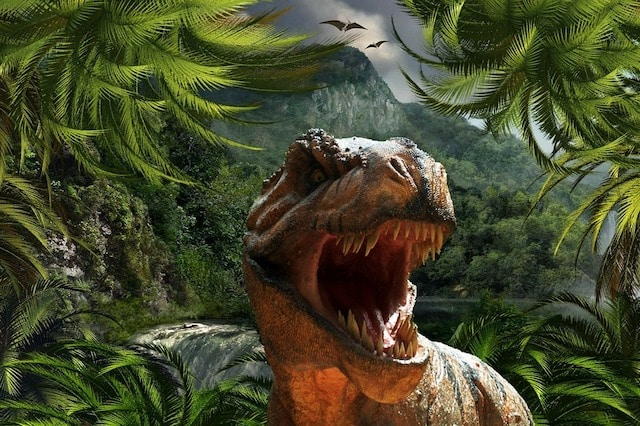
When we think of dinosaurs flying, the image of a T. Rex sprouting wings and soaring through the skies might come to mind. But the story of how dinosaurs evolved the ability to fly is far more fascinating—and complex—than that. While modern birds, like chickens, are the most famous descendants of dinosaurs, they’re not the only ones who took to the skies. In fact, flight evolved in dinosaurs multiple times, in different places and among different species.
Fossil evidence suggests that the ability to fly didn’t come from a single evolutionary event where one dinosaur suddenly became a bird. Instead, it appears that prehistoric raptors in places like South America also developed the ability to fly independently. This means that flight evolved at least three times in the dinosaur family tree, according to scientists who studied deinonychosaurs, the branch of dinosaurs that eventually led to modern birds.
One of the most intriguing discoveries is a small dinosaur called Rahonavis, found in the southern hemisphere. This tiny, feathered creature is believed to have had the ability to fly. Another remarkable example is the Microraptor, a four-winged dinosaur that likely used its wings to glide and possibly even flap its way into short bursts of flight. These findings suggest that feathered dinosaurs were experimenting with flight in various ways, long before modern birds took over the skies.
It’s now thought that many feathered dinosaurs could at least glide, using their feathered limbs to descend from trees or cliffs. However, the ability to flap wings and take off for sustained flight was much rarer—though not as rare as scientists once believed. Dinosaurs like Rahonavis and Microraptor show us that flight was a trait that evolved independently in different groups, rather than a single evolutionary leap.
5. Did You Know Red Blood Evolved Twice in Vertebrates?

When we think about red blood, it feels like one of those facts of life — almost too obvious to question. If it bleeds and has a spine, it probably bleeds red. That’s just how living things work… right?
Well, not quite.
It turns out, the crimson liquid pulsing through our veins has a deeper and more tangled evolutionary story than most of us ever imagined. While iron-rich hemoglobin gives our blood its signature color — and efficiently carries oxygen throughout the body — scientists have discovered that this trait didn’t evolve just once, but twice, independently.
Yes, seriously.
Around 500 million years ago, two very different branches of vertebrates came up with their own ways of producing red blood. On one side, you have the jawed vertebrates — which includes us, mammals, reptiles, birds, and most fish — all using hemoglobin in pretty much the same way. But then there are the jawless creatures, like lampreys, who took a completely separate evolutionary route.
These ancient, eel-like fish didn’t just borrow the same blueprint. Instead, their ancestors developed a whole different set of oxygen-carrying proteins, completely unrelated to ours, that just happened to result in red blood too. Talk about evolutionary déjà vu.
This phenomenon is known as convergent evolution — when nature stumbles upon the same solution through totally different paths. It’s like two inventors on opposite sides of the world coming up with airplanes, without ever speaking to each other.
Even more mind-bending? Red isn’t the only color blood can be. There are creatures with green blood like Prasinohaema skinks, blue-blooded animals like horseshoe crabs, and even purple-blooded worms. Suddenly, what seemed “normal” looks like just one of nature’s many experiments.
4. Venom: A Deadly Evolutionary Innovation That Evolved Over 100 Times
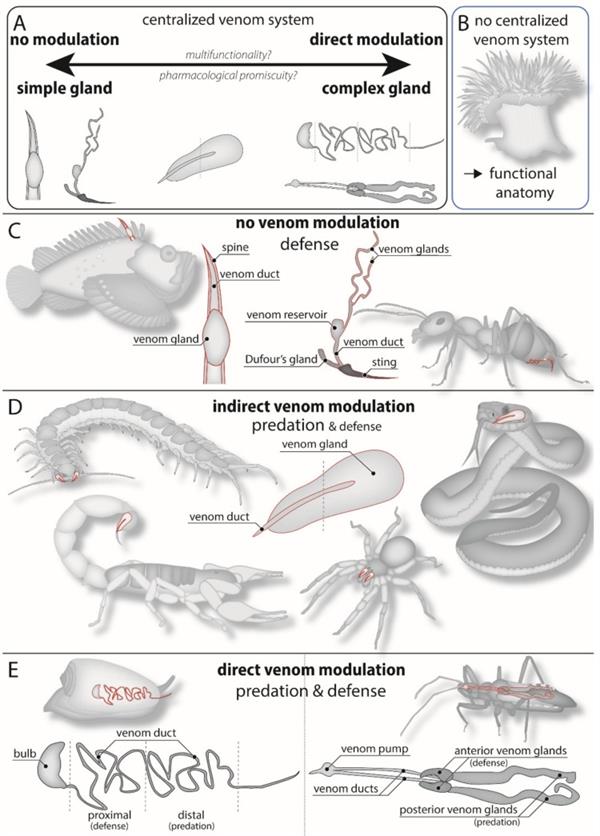
The natural world is full of dangerous animals, and while some rely on brute strength, sharp teeth, or powerful claws, others have evolved a far more sinister weapon: venom. This biological tool is as diverse as it is deadly, with different venoms causing a wide range of effects. From neurotoxic venoms that attack the nervous system to hemotoxic venoms that target the blood and organs, venom is a masterclass in evolutionary efficiency. But where does it come from, and how did it evolve so many times?
The answer is both astonishing and complex. Venom systems have evolved over 100 separate times across a wide variety of life forms, including snakes, fish, spiders, insects, amphibians, and even some mammals. This makes venom one of the most prolific and successful evolutionary traits in the animal kingdom. Its origins, however, remain shrouded in mystery, and scientists are still piecing together how and why it evolved so many times.
What makes venom so fascinating is its diversity. Some venoms are closely related to digestive enzymes, suggesting they may have originated as tools for breaking down food. Others, however, have no such connection, indicating that venom evolved independently in these species. The way venom is delivered also varies widely. Snakes use fangs, spiders and scorpions rely on stingers, and some amphibians, like the poison dart frog, secrete toxins through their skin. This variety highlights just how versatile and adaptable venom has become.
Venom is not just a weapon; it’s a highly specialized tool that has allowed animals to survive and thrive in some of the harshest environments. For predators, it’s a means of immobilizing prey. For prey animals, it’s a defense mechanism against being eaten. And for some species, like the male platypus, venom even plays a role in mating competitions. This versatility is a testament to venom’s evolutionary success.
Despite its widespread occurrence, the origins of venom remain a puzzle. Why did it evolve so many times independently? How did different species develop such unique venom systems? These questions continue to intrigue scientists, who are working to uncover the hidden history of this deadly adaptation.
3. Did Dogs Really Evolve from Wolves More Than Once?

We’ve all heard the story: dogs came from wolves, gradually becoming the lovable companions we know today. But what if that tale isn’t as simple — or as singular — as we thought?
It’s widely accepted that dogs started evolving from wolves around 130,000 years ago, and humans began domesticating them somewhere between 12,000 and 15,000 years ago. But here’s the twist — this transformation might not have been a one-time event. In fact, it could have happened in multiple places, completely independently.
For years, scientists have debated where the first dogs came from. Was it East Asia? Europe? Maybe Central Asia? Well, recent genetic studies suggest that… all of the above might be true.
By digging into the ancient DNA found in old dog bones, researchers uncovered something surprising: dogs from Eastern regions and those from Western regions show distinct genetic differences. They likely descended from different populations of wolves, meaning two separate domestication events could have taken place.
Even more intriguing, another study comparing dogs from the Middle East and Eastern Asia revealed similar genetic splits. These dogs don’t just look different — their DNA tells entirely different stories. That means different wolf groups, in different parts of the world, may have separately begun cozying up to humans and evolving into early dogs.
Imagine it: somewhere in ancient Europe, a pack of wolves begins hanging around human camps, drawn in by warmth or scraps. Meanwhile, halfway across Asia, a completely different group of wolves is doing the same — unaware that their cousins thousands of miles away are on the same evolutionary journey.
It’s a mind-blowing possibility — that man’s best friend didn’t come from a single origin point, but may have been born out of parallel moments of mutual curiosity and survival.
The more we study the deep history of dog evolution, the more it seems like this partnership was meant to be — not once, but again and again, wherever humans and wolves crossed paths.
2. Life Itself May Have Evolved Multiple Times
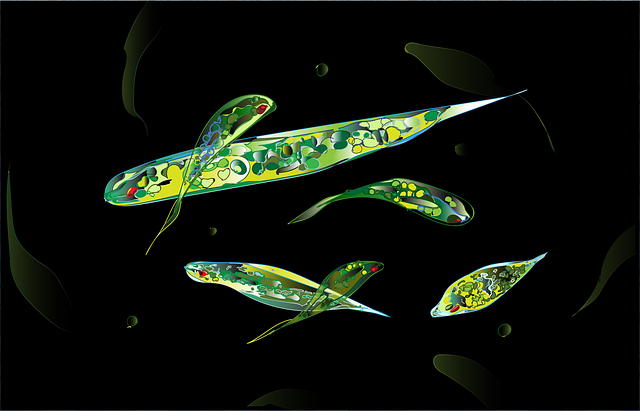
What if the story of life’s beginning wasn’t a single, dramatic moment, but rather a series of smaller, scattered events? Could it be that life as we know it didn’t start with one definitive spark, but instead emerged multiple times, in different places, and in ways we’re only beginning to understand? This idea challenges the long-held belief that all life on Earth can be traced back to a single, common ancestor—a theory often referred to as the Last Universal Common Ancestor (LUCA).
Science is now exploring the possibility that life didn’t begin once, but over and over again in unconnected environments. In its earliest, simplest forms, life may have been spreading like wildfire, taking root in unique and diverse conditions across the planet. However, Earth’s history is marked by mass extinction events, and it’s possible that many of these early forms of life were wiped out, leaving only a few survivors to evolve into the diversity we see today. In this scenario, what we consider “life” today might be just a fraction of what once existed.
For decades, scientists believed that all life on Earth could be traced back to a single microorganism—a progenitor from which every living thing evolved. But emerging evidence suggests that this might not be the case. Instead, there could have been multiple origins of life, each giving rise to its own distinct “tree of life.” Some of these ancient lineages may have disappeared entirely, while others might still exist in places we’ve yet to fully explore.
One of the most intriguing pieces of evidence for this theory comes from life forms that thrive in extreme environments—places where most organisms couldn’t survive. Deep-sea hydrothermal vents, for example, are home to microbes that live in scorching temperatures and under immense pressure. Similarly, microbes have been found in the darkest, most sealed corners of the Earth, such as underground caves or ancient subglacial lakes. These organisms, often called extremophiles, are rarely studied, but they could hold clues to life’s multiple origins. Could they be remnants of entirely separate trees of life, thriving in isolation from the rest of the biosphere?
The idea that life may have evolved multiple times isn’t just a fascinating thought experiment—it has profound implications for how we understand our planet’s history and the potential for life elsewhere in the universe. If life can emerge independently in different conditions, it raises the possibility that life could exist on other planets, not as a single, universal form, but as a variety of unique and unrelated organisms.
While this theory remains speculative, it’s a reminder of how much we still have to learn about the origins of life. From the depths of the ocean to the farthest reaches of space, the story of life is far from over—and it might be far more complex than we ever imagined.
1. The Bird That Went Extinct… Then Came Back Through Evolution
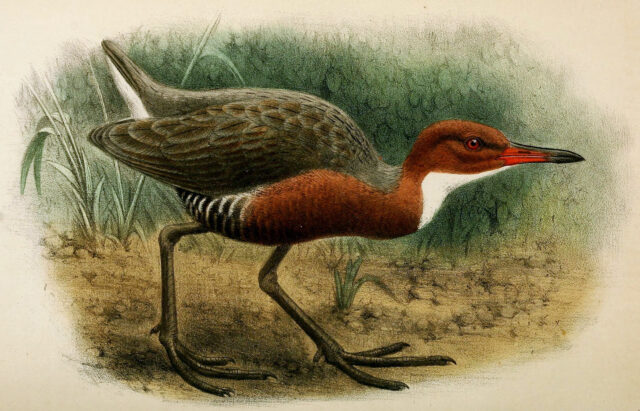
Some stories in nature are so unbelievable, they sound like science fiction. But the tale of the Aldabra rail is as real — and as mind-bending — as it gets.
This isn’t just a bird that survived extinction. It’s a bird that evolved into existence, went extinct, and then evolved again — almost identically — from a different ancestor.
Let’s rewind.
Thousands of years ago, the Aldabra Atoll, a remote coral island in the Indian Ocean, was home to a small, flightless bird called the Aldabra rail. It couldn’t fly, which is adorable… and also unfortunate. Because about 136,000 years ago, rising sea levels completely flooded the atoll, wiping out nearly all land-based life — including the rail.
Gone. Extinct.
But nature, as it turns out, had other plans.
Roughly 100,000 years later, the world cooled during an ice age, causing ocean levels to drop. The Aldabra Atoll re-emerged from the sea. And far away in Madagascar, a bird called the white-throated rail — capable of flight — did what birds do: it flew. Some of these adventurous fliers landed on the Aldabra Atoll and decided to stay.
Here’s where it gets wild.
These new arrivals were the same species that had colonized the island long before. And just like their ancestors, these birds gradually lost their ability to fly — there were no predators, so why waste energy flapping? Over generations, they evolved shorter wings, thicker legs, and heavier bodies, becoming nearly identical to the original, extinct Aldabra rail.
Yes, the bird re-evolved — not metaphorically, but literally. It is one of the rare examples of a phenomenon scientists call iterative evolution, where the same or similar species evolves more than once from the same ancestor at different points in time.
Comparing fossil bones from the extinct rail with the newly flightless population reveals just how similar they are: both have stronger legs for walking, denser bones, and features that make flight impossible.










